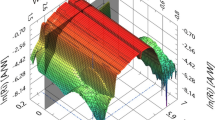Abstract
By taking advantage of Auger suppression techniques, the leakage currents of room temperature infrared detectors operating in the LWIR band can be greatly reduced. At present, these detectors suffer from large 1/f noise and hence the improvement in the detectivity resulting from the reduced leakage currents can only be realized at high frequencies. However, this is not a problem for heterodyne systems which employ intermediate frequencies above 40 MHz. A thermo-electrically cooled Auger suppressed infrared detector operated at 260K has been studied as a heterodyne detector. The device was operated with the application of sufficient local oscillator power to double its dark current (about 0.3 mW) and a NEP of 2 x 10-19 W Hz−1 was deduced from heterodyne measurements. The frequency response is presently limited by a combination of the detector capacitance and the series resistance to about 70 MHz and ways to reduce this series resistance are considered.
Similar content being viewed by others
References
C.T. Elliott, N.T. Gordon, R.S. Hall, T.J. Phillips, C.L. Jones, B.E. Matthews, C.D. Maxey and N.E. Metcalfe,SPIE 2269, 648(1994).
C.T. Elliott, N.T. Gordon,R.S. Hall,T.J. Phillips,A.M. White, C.L. Jones, C.D. Maxey and N.E. Metcalfe,J. Electron. Mater. 25, 1139 (1996).
M.C. Teich, Chap. 9Semiconductors and Semimetals vol. 5, ed. R.K. Willardson and A.C. Beer, (New York: Academic Press, 1970).
M.C. Teich,Proc. IEEE 56 (1), 37 (1968).
D.J. Wilson, G.D.J. Constant, R. Foord and J.M. Vaughan,Infrared Phys. 31 (1), 109 (1991).
A.M. White,Infrared Phys. 27 (6), 361 (1987).
C.D. Maxey, I. Gale, J.B. Clegg and P.A.C Whiffin,Semicond. Sci. Technol. 8, S183 (1993).
C.D. Maxey, C.L. Jones, N.E. Metcalfe, R. Catchpole, M.R. Houlton, A.M. White, N.T. Gordon and C.T. Elliott,J. Electron. Mater. 25, 1276 (1996).
P. Capper,Properties of Narrow Gap Cadmium-Based Compounds, emis datareview 10, INSPEC, (London, 1994), p. 207.
A.P. Davis, C.T. Elliott and A.M. White,Infrared Phys. 31 (6), 575 (1991).
C.T. Elliott, N.T. Gordon, R.S. Hall and G. Crimes,J. Vac. Sci. Technol. A 8, 1251(1990).
T.J. Phillips and N.T. Gordon,J. Electron. Mater. 25, 1151 (1996).
Author information
Authors and Affiliations
Rights and permissions
About this article
Cite this article
Elliott, C.T., Gordon, N.T., Phillips, T.J. et al. Minimally cooled heterojunction laser heterodyne detectors in metalorganic vapor phase epitaxially grown Hg1-xCdxTe. J. Electron. Mater. 25, 1146–1150 (1996). https://doi.org/10.1007/BF02655000
Received:
Revised:
Issue Date:
DOI: https://doi.org/10.1007/BF02655000




